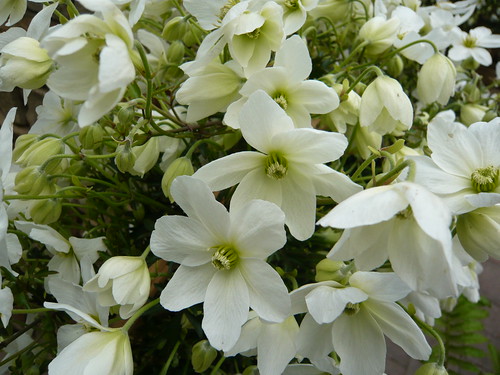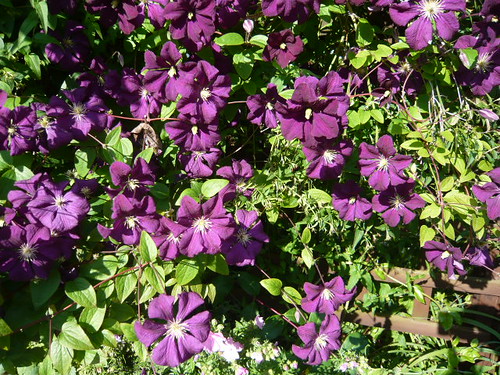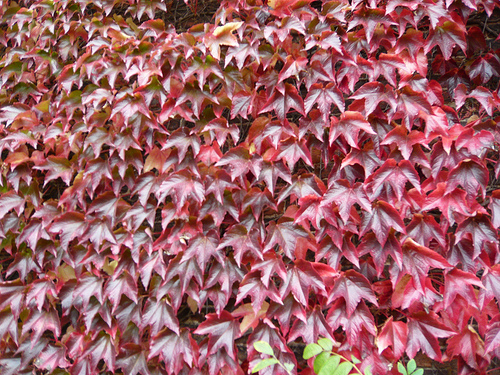Clematis for Pots and Containers
Tips for Growing Clematis in Pots
Use a large pot, bigger the better as the roots need room to grow and the soil needs to hold moisture. 18″ depth and diameter are needed.
Use good quality compost and add a slow release fertiliser.
Top dress each year and add more slow release fertiliser.
Repot when the compost is totally denuded of goodness, perhaps every 5 years.
Plant deeply as you would in the garden, to avoid clematis wilt.
Water regularly and avoid drying winds and strong sunshine.
Support the vine with a good quality, firm framework.

‘Adventures in Clematis Propagation by billums who tried this successfully the year before last, but only with one little pot. Last spring I tried again on a much larger scale.
You just take a Clematis vine and run it through a pot of soil and it will take root. Not much effort involved if the damn squirrels would quit digging the vines out of the pots.
You do have to do this right when the vines first pop up and are still flexible enough to bend into a “U” shape to run through the pot without breaking.’ CC BY 2.0
‘Which’ Recommended Clematis Varieties for Pots
Chantilly is a small flowering rain resistant white clematis.
The Vagabond grows 4 feet tall in a pot and has a long flowering season.
Early summer flowering Rebecca has deep red flowers and like most varieties suitable for pots, only needs a light pruning in early spring.
Crystal Fountain is one of my favourites looking like a quilled, double flowered clematis in a pale lilac.
Pots suitable for Clematis
- Select good looking pots and containers. Only the skeleton will be visible in winter.
- Unusual containers may be created from reclamation or recycling activities.
- Ensure you create drainage holes.
- Pots need to hold healthy hairy roots at least 12″ long.
- A wide pot can also support some annual trailing plants to disguise the pot edges.
- If using terracotta pots line the inner walls with polythene to reduce evaporation.
- Are you ‘Pushing your luck’ with so many good clematis grown in the ground. I’ve moved away from pots and containers for my clematis.
Rampant and Strong Clematis Unsuitable for Pots
Clematis Venosa Violacea
Clematis armandii
Clematis cirrhosa ‘Freckles’
Clematis montana and its relatives





